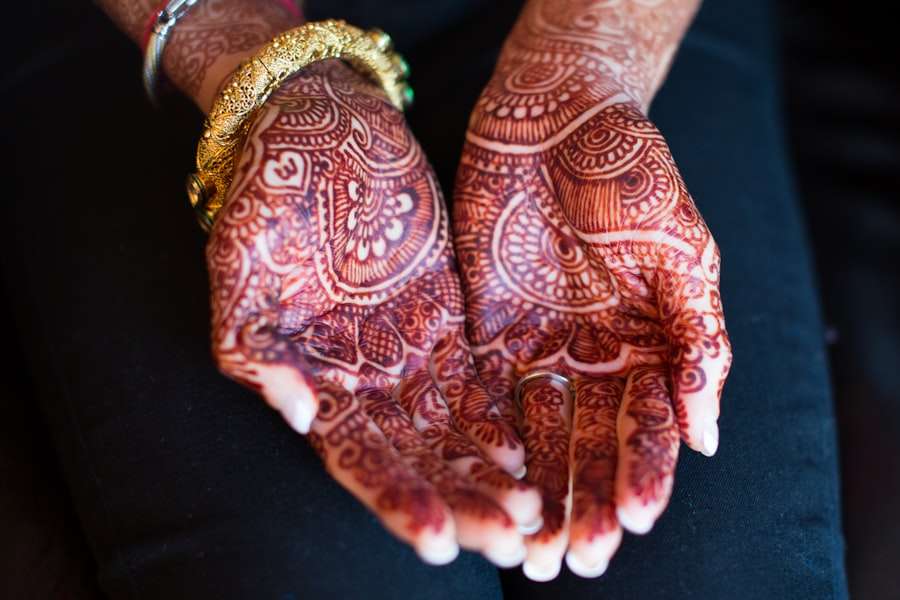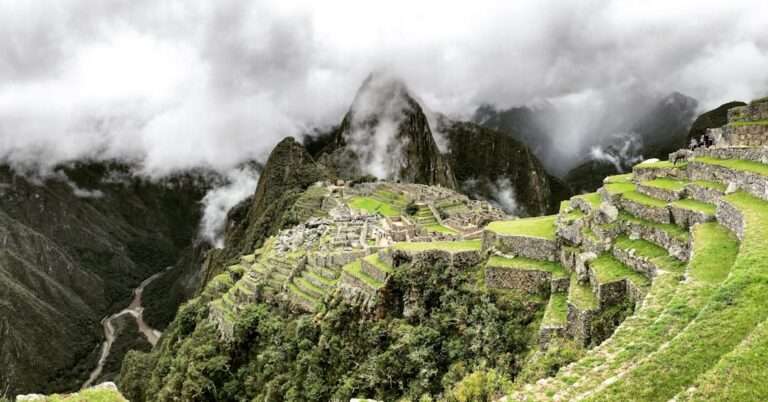How is the wave pattern symbol used in Pacific Island art?

Pacific Island art is a diverse and culturally significant form of artistic expression that has been transmitted through generations. It encompasses various mediums, including carving, weaving, tattooing, and painting, all deeply rooted in the cultural traditions and beliefs of Pacific Island communities. The wave pattern is a prominent and recurring motif in Pacific Island art, holding great significance and symbolism within these cultures.
The wave pattern is a fundamental element in Pacific Island art, reflecting the intimate relationship between Pacific Islanders and the ocean. The ocean serves as a source of sustenance and livelihood for these communities, while also holding spiritual and cultural importance. The wave pattern visually represents the ocean’s power and beauty, often symbolizing the interconnectedness of all living things.
In Pacific Island art, the wave pattern conveys a sense of movement, fluidity, and dynamism, capturing the ever-changing nature of the ocean. This motif serves not only as an aesthetically pleasing design but also as a powerful symbol of identity and cultural heritage for Pacific Island communities.
Key Takeaways
- Pacific Island art is rich in cultural significance and often reflects the connection to nature and the ocean.
- The wave pattern holds great significance in Pacific Island culture, symbolizing the power and beauty of the ocean.
- Traditional techniques and materials such as carving, weaving, and natural dyes are used to create wave patterns in Pacific Island art.
- Wave patterns are used in various forms of Pacific Island art, including tattoos, tapa cloth, and wood carvings, each with its own unique cultural significance.
- The wave pattern in Pacific Island art symbolizes the connection to nature and the ocean, representing themes of strength, resilience, and the ebb and flow of life.
The significance of the wave pattern in Pacific Island culture
The Cultural Significance of Waves
In Pacific Island cultures, the wave pattern is often seen as a symbol of strength, resilience, and adaptability, reflecting the enduring spirit of Pacific Island peoples in the face of adversity. It is also used to convey a sense of unity and interconnectedness, as the waves are seen as a powerful force that connects all living things.
Practical Importance in Navigation
The wave pattern holds practical importance in Pacific Island societies, particularly in traditional navigation techniques. Pacific Islanders relied on their knowledge of wave patterns to navigate the vast expanse of the ocean. By observing the movement and behavior of waves, they were able to determine their position and direction, allowing them to navigate with precision and skill.
A Symbol of Survival and Resilience
The wave pattern is not just a decorative motif in Pacific Island art; it is a symbol of survival, resilience, and the enduring connection between Pacific Islanders and the ocean. This practical knowledge of wave patterns has been passed down through generations and continues to be an important part of Pacific Island culture today.
Traditional techniques and materials used to create wave patterns in Pacific Island art

The creation of wave patterns in Pacific Island art involves a variety of traditional techniques and materials that have been passed down through generations. One common method for creating wave patterns is through carving, which is often done using wood or stone. Skilled artisans use sharp tools to carefully carve intricate wave patterns into these materials, creating stunning works of art that capture the fluidity and movement of the ocean.
Another traditional technique for creating wave patterns is through weaving, which is commonly used in the creation of tapa cloth. Tapa cloth is made from the inner bark of certain trees, which is then beaten and dyed to create intricate designs, including wave patterns. The process of weaving tapa cloth requires great skill and precision, as artisans carefully create wave patterns using natural dyes and pigments.
In addition to carving and weaving, tattooing is another traditional technique used to create wave patterns in Pacific Island art. Tattooing has a long history in Pacific Island cultures and is often used to convey important cultural and spiritual meanings. The process of tattooing involves using sharp tools to create intricate designs on the skin, including wave patterns that symbolize the connection between Pacific Islanders and the ocean.
These traditional techniques and materials are integral to the creation of wave patterns in Pacific Island art, reflecting the deep cultural heritage and artistic traditions of these communities.
The use of wave patterns in different forms of Pacific Island art, such as tattoos, tapa cloth, and wood carvings
Wave patterns are a ubiquitous motif in various forms of Pacific Island art, including tattoos, tapa cloth, and wood carvings. In tattooing, wave patterns are often used to symbolize the connection between Pacific Islanders and the ocean, as well as to convey important cultural and spiritual meanings. These intricate designs are carefully crafted by skilled tattoo artists using traditional techniques, creating stunning works of art that hold deep significance for those who wear them.
In tapa cloth, wave patterns are created through weaving and dyeing techniques, resulting in beautiful textiles that are adorned with symbolic designs representing the power and beauty of the ocean. Tapa cloth has been used for centuries in Pacific Island cultures for clothing, ceremonial purposes, and as a form of artistic expression. Wood carvings are another important form of Pacific Island art that often feature wave patterns as a central motif.
Skilled artisans use traditional carving techniques to create intricate designs that capture the fluidity and movement of the ocean, resulting in stunning works of art that are highly prized within Pacific Island communities. These wood carvings are often used for ceremonial purposes, as well as for decorative and functional items such as bowls, utensils, and ceremonial objects. The use of wave patterns in these different forms of Pacific Island art reflects the deep cultural significance and spiritual meanings associated with this motif.
The symbolism of the wave pattern in Pacific Island art and its connection to nature and the ocean
The symbolism of the wave pattern in Pacific Island art is deeply rooted in the cultural beliefs and spiritual traditions of these communities. The wave pattern is often used to symbolize the power and beauty of the ocean, as well as to convey important cultural meanings related to nature and the environment. In many Pacific Island societies, the ocean is considered a sacred and life-giving force, and the wave pattern is used to honor and pay homage to this vital element of their environment.
The fluidity and movement of waves are seen as a symbol of strength, resilience, and adaptability, reflecting the enduring spirit of Pacific Island peoples in the face of adversity. The wave pattern also holds important symbolic meanings related to interconnectedness and unity within Pacific Island cultures. Waves are seen as a powerful force that connects all living things, representing the interconnectedness of nature and the environment.
This motif serves as a reminder of the close relationship that Pacific Islanders have with the natural world, emphasizing their deep connection to the ocean and its life-giving properties. The symbolism of the wave pattern in Pacific Island art reflects the profound respect and reverence that these communities have for nature and their environment, as well as their enduring connection to the ocean.
Contemporary interpretations of the wave pattern in Pacific Island art

Traditional Techniques Meet Modern Practices
In contemporary Pacific Island art, the wave pattern continues to be a prominent motif that holds deep cultural significance and spiritual meanings. While traditional techniques and materials are still widely used to create wave patterns, contemporary artists are also exploring new ways to interpret this motif through modern artistic practices.
Innovative Interpretations and Experimentation
For example, some artists are incorporating digital technology into their work to create innovative designs that capture the fluidity and movement of waves in new and exciting ways. Others are experimenting with different materials and techniques to push the boundaries of traditional artistic practices while still honoring the cultural heritage and symbolism of the wave pattern.
Addressing Contemporary Issues
Contemporary interpretations of the wave pattern in Pacific Island art also reflect the ongoing resilience and adaptability of these communities in the face of social, political, and environmental challenges. Many artists are using their work to address important issues related to climate change, environmental conservation, and cultural identity, using the wave pattern as a powerful symbol to convey their messages.
Celebrating Cultural Heritage and Addressing the Future
Through their art, contemporary Pacific Island artists are continuing to celebrate their cultural heritage while also addressing pressing issues facing their communities today. The contemporary interpretations of the wave pattern in Pacific Island art demonstrate the enduring relevance and significance of this motif within Pacific Island cultures.
The impact of colonization and globalization on the use of wave patterns in Pacific Island art
The impact of colonization and globalization has had a profound effect on the use of wave patterns in Pacific Island art. Throughout history, Pacific Island communities have faced significant challenges as a result of colonization, including cultural assimilation, loss of traditional practices, and exploitation of their natural resources. As a result, many traditional artistic practices were suppressed or marginalized by colonial powers, leading to a decline in the use of wave patterns in Pacific Island art.
However, despite these challenges, many Pacific Island communities have worked tirelessly to preserve their cultural heritage and artistic traditions, including the use of wave patterns in their art. Globalization has also had an impact on the use of wave patterns in Pacific Island art, as it has led to increased exposure to outside influences and new artistic practices. While this has brought about new opportunities for collaboration and exchange within the global artistic community, it has also raised concerns about cultural appropriation and exploitation.
Many contemporary Pacific Island artists are grappling with these complex issues as they seek to navigate their place within a globalized art world while still honoring their cultural heritage and traditions. The impact of colonization and globalization on the use of wave patterns in Pacific Island art highlights the ongoing challenges facing these communities as they strive to preserve their unique artistic traditions while also adapting to an ever-changing world.
FAQs
What is the wave pattern symbol in Pacific Island art?
The wave pattern symbol in Pacific Island art represents the ocean and its importance in the culture and livelihood of Pacific Island communities.
How is the wave pattern symbol used in Pacific Island art?
The wave pattern symbol is used in Pacific Island art to depict the power, beauty, and significance of the ocean in the lives of Pacific Islanders. It is often incorporated into various art forms such as carvings, tattoos, textiles, and paintings.
What does the wave pattern symbol represent in Pacific Island art?
The wave pattern symbol in Pacific Island art represents the interconnectedness of Pacific Islanders with the ocean, as well as themes of strength, resilience, and the cyclical nature of life.
Are there variations of the wave pattern symbol in Pacific Island art?
Yes, there are variations of the wave pattern symbol in Pacific Island art, with different island cultures incorporating their own unique interpretations and designs of the wave motif.
Is the wave pattern symbol used in contemporary Pacific Island art?
Yes, the wave pattern symbol continues to be used in contemporary Pacific Island art, as artists draw inspiration from traditional motifs and incorporate them into modern artistic expressions.





